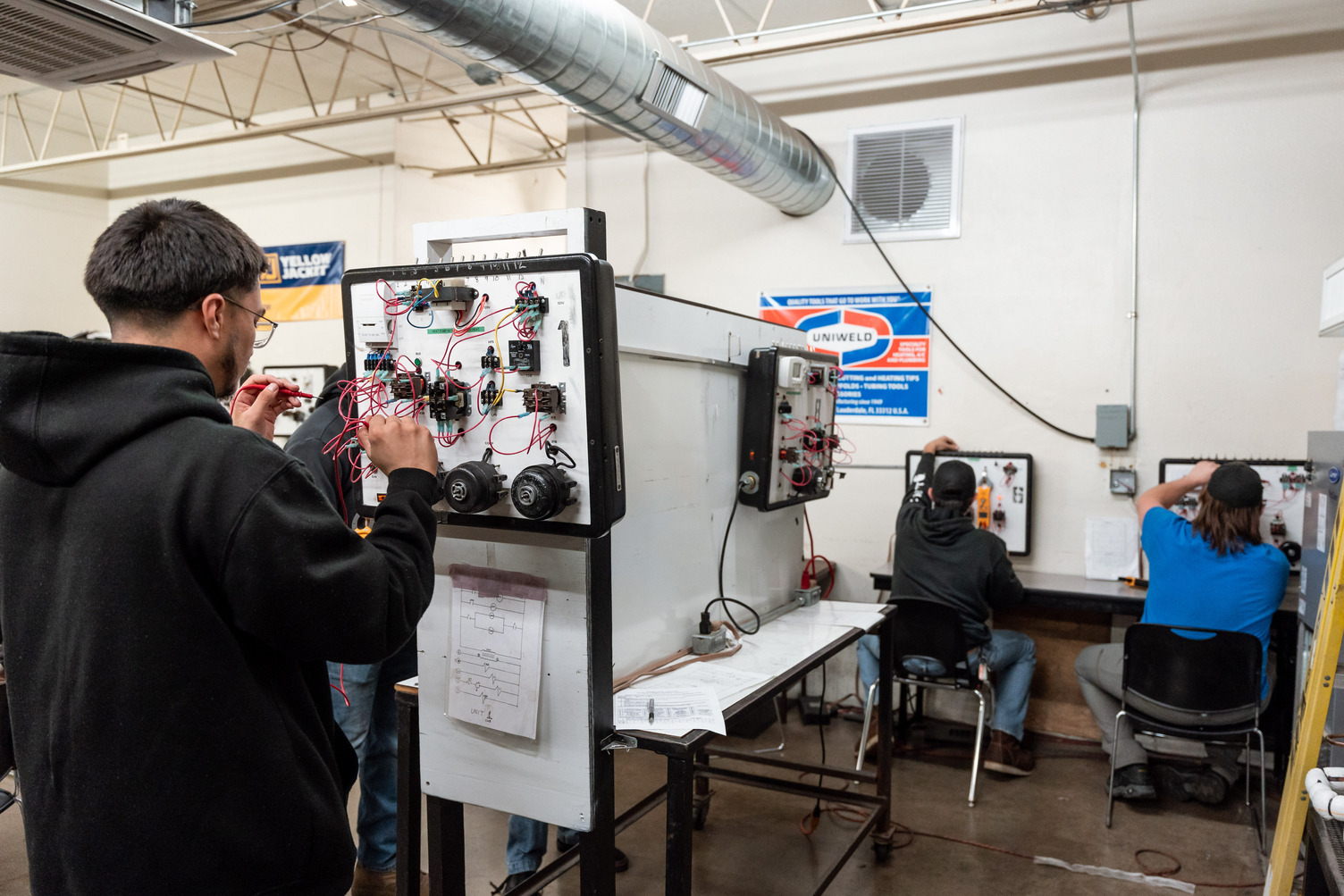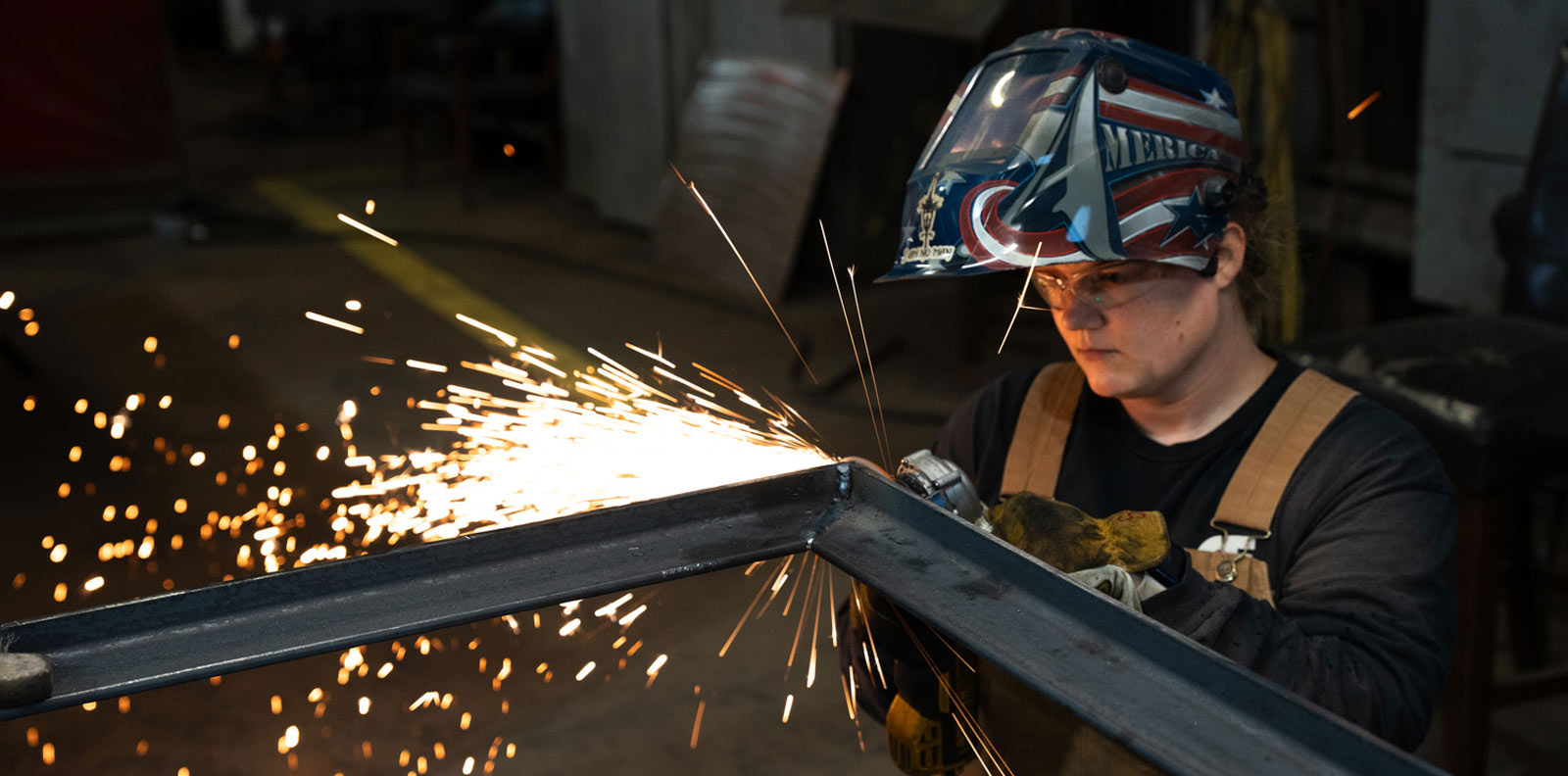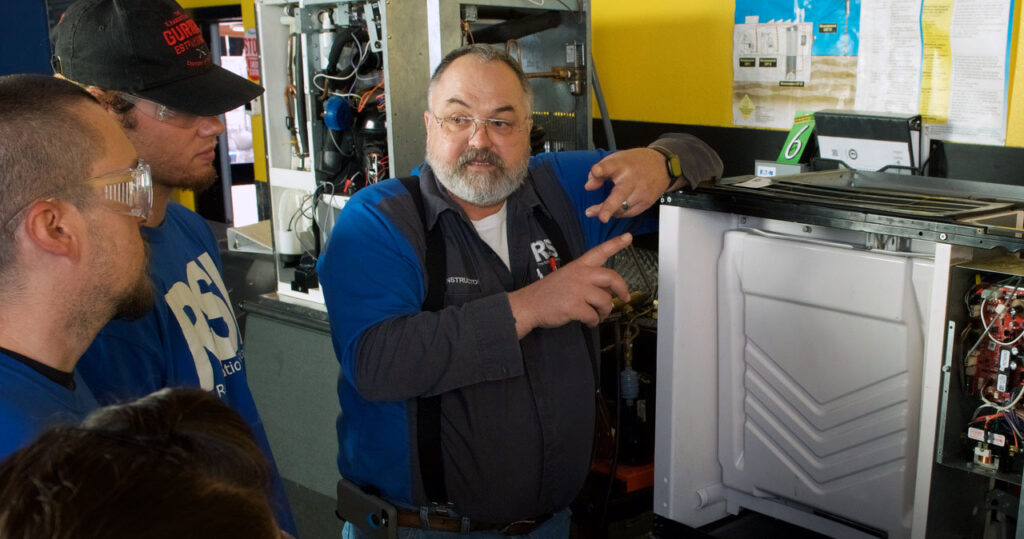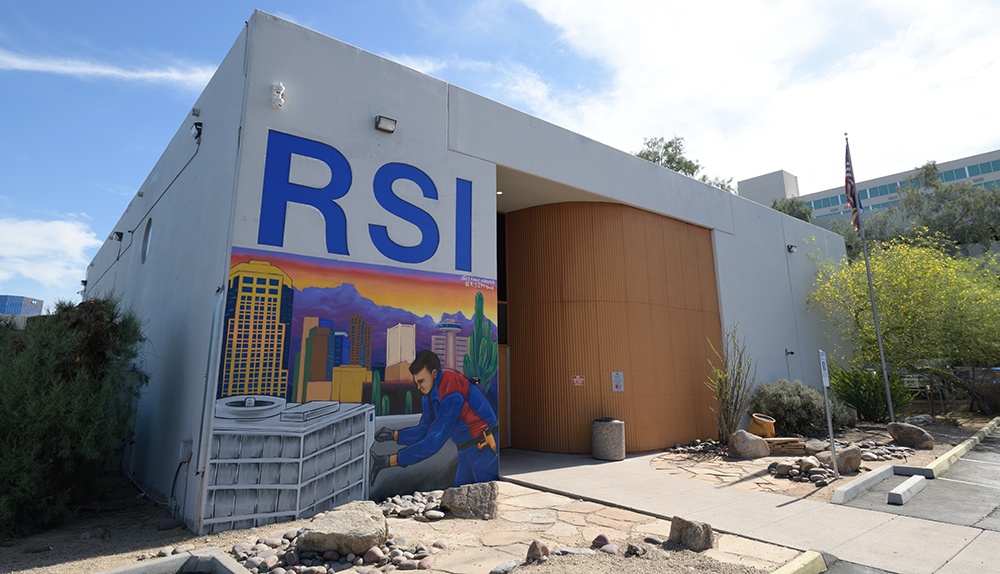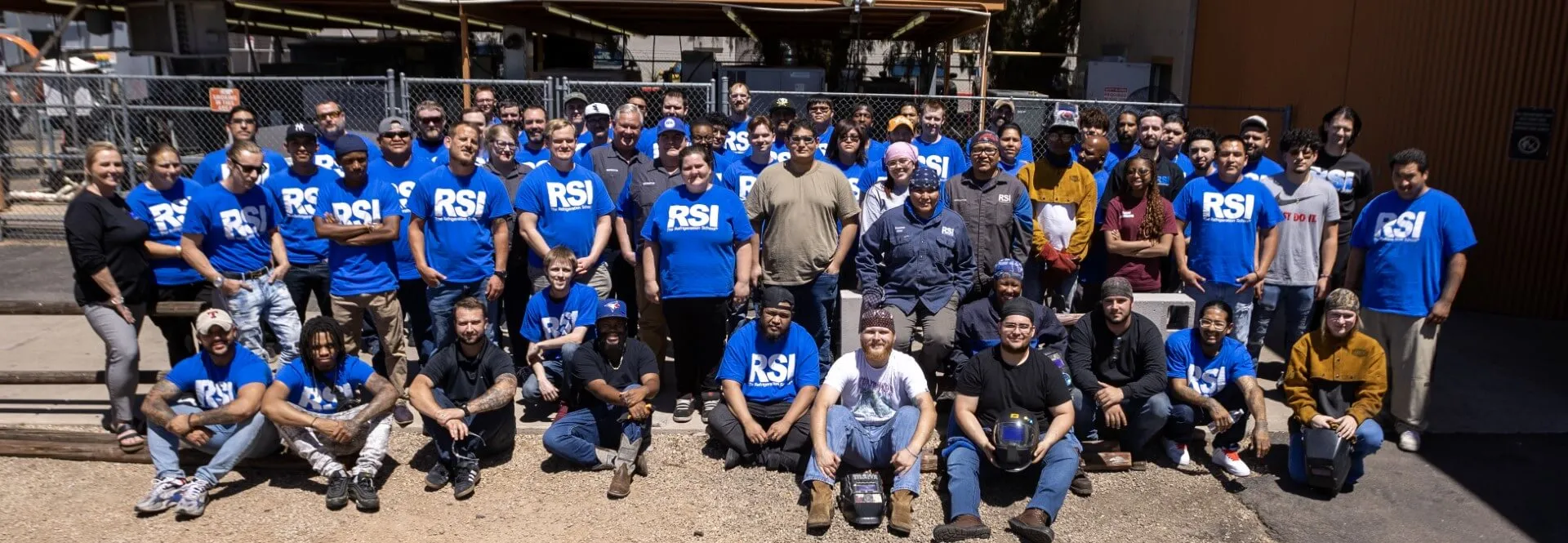RSI is a Great Training Option for Everyone
Learn more about how we can prepare you to advance your career.
HVAC training programs introduce students to the fundamentals of heating, ventilation, air conditioning, and refrigeration systems. These classes are structured to provide a foundation in both theory and hands-on practice, helping students understand how systems operate, why they may fail, and how to repair or maintain them.
The goal of these courses is to prepare students for entry-level work in the HVAC/R field. From system diagnostics to electrical circuits and safety standards, students can expect a wide range of topics covered in a typical HVAC curriculum.
Understanding HVAC Systems
HVAC training begins with the basics: how heating and cooling systems function and the role of each component. Students learn how systems regulate temperature, circulate air, and maintain indoor comfort in residential and commercial environments.
Coursework may include the study of airflow, energy efficiency, and various types of HVAC systems, including central air, furnaces, and heat pumps. These lessons help students understand how to recognize common performance issues and how system design affects efficiency and air quality.
Refrigeration Cycle Fundamentals
One of the most important concepts taught in HVAC training is the refrigeration cycle—the process that makes modern air conditioning and refrigeration systems work. Rather than simply adding cool air to a space, these systems are designed to remove heat and relocate it elsewhere. This transfer of heat is what allows spaces to stay cool and comfortable, whether in a home, supermarket, or industrial facility.
Get Started on the Path to a New Career
Fill out our form to learn how we can help you change your life.
Students study the four primary stages of the refrigeration cycle: compression, condensation, expansion, and evaporation. Each stage plays a specific role in moving heat and maintaining system efficiency. As part of this instruction, students become familiar with components such as compressors, condensers, evaporators, and expansion valves. Understanding how these parts interact is key to troubleshooting system issues and performing accurate diagnostics.
Training also emphasizes practical experience. In the lab, students work with real equipment to apply what they’ve learned, using gauges and diagnostic tools to check system performance, identify faults, and complete basic repairs. This hands-on approach helps reinforce classroom concepts and builds the confidence needed to work in real-world HVAC environments.
Electrical Systems and Controls
Modern HVAC systems rely on electrical components to operate. HVAC training introduces students to the fundamentals of electrical circuits, wiring, and system controls.
Instructors cover components such as relays, thermostats, fuses, and circuit breakers. Students also learn to read schematics, safely handle electrical systems, and use diagnostic tools to troubleshoot problems. Safety is a central focus of electrical training in HVAC programs.
HVAC Installation and Maintenance
Proper installation and maintenance are key to HVAC system performance. Students are taught how to install systems according to manufacturer specifications and how to maintain them to extend their lifespan.
Training includes tasks such as replacing filters, checking refrigerant levels, inspecting coils, and identifying signs of wear or corrosion. These skills help prepare students for roles in residential or commercial service environments.
Safety Practices and Regulations
Safety is a critical component of HVAC training. Students learn how to follow established guidelines to protect themselves, coworkers, and equipment.
Courses often include instruction on EPA refrigerant handling regulations, OSHA safety standards, and proper use of personal protective equipment (PPE). By the end of the program, students are expected to demonstrate a working knowledge of how to handle equipment and materials safely.
Hands-On HVAC Training Opportunities
HVAC programs combine classroom instruction with lab-based training. This hands-on experience allows students to apply what they’ve learned in real-world scenarios.
Whether testing system pressure or assembling HVAC components, lab time reinforces classroom lessons and helps build practical skills. These exercises prepare students for job-site responsibilities and improve overall readiness for the field.
Career Paths After HVAC Training
Graduates of HVAC programs may pursue entry-level roles such as HVAC technician, installer, or maintenance specialist. These roles exist in a variety of settings, from residential homes to large commercial facilities.
Some programs also prepare students for industry certifications such as EPA Section 608 or NATE, which can increase job opportunities and pay potential. With the demand for skilled HVAC technicians expected to grow, training can be the first step toward a long-term career in the industry.
How to Enroll in the RSI HVAC/R Program
The Refrigeration Technologies program at RSI is designed to help students build a foundation for success in the HVAC field. This training covers HVAC system installation, refrigeration service, and electrical diagnostics.
Students benefit from a structured learning environment, experienced instructors, and access to modern equipment. The program is developed to meet the needs of employers and help students prepare for entry-level positions and professional certifications.
To learn more about HVAC training at The Refrigeration School, call (855) 232-1669 or visit our HVAC/R program page.
